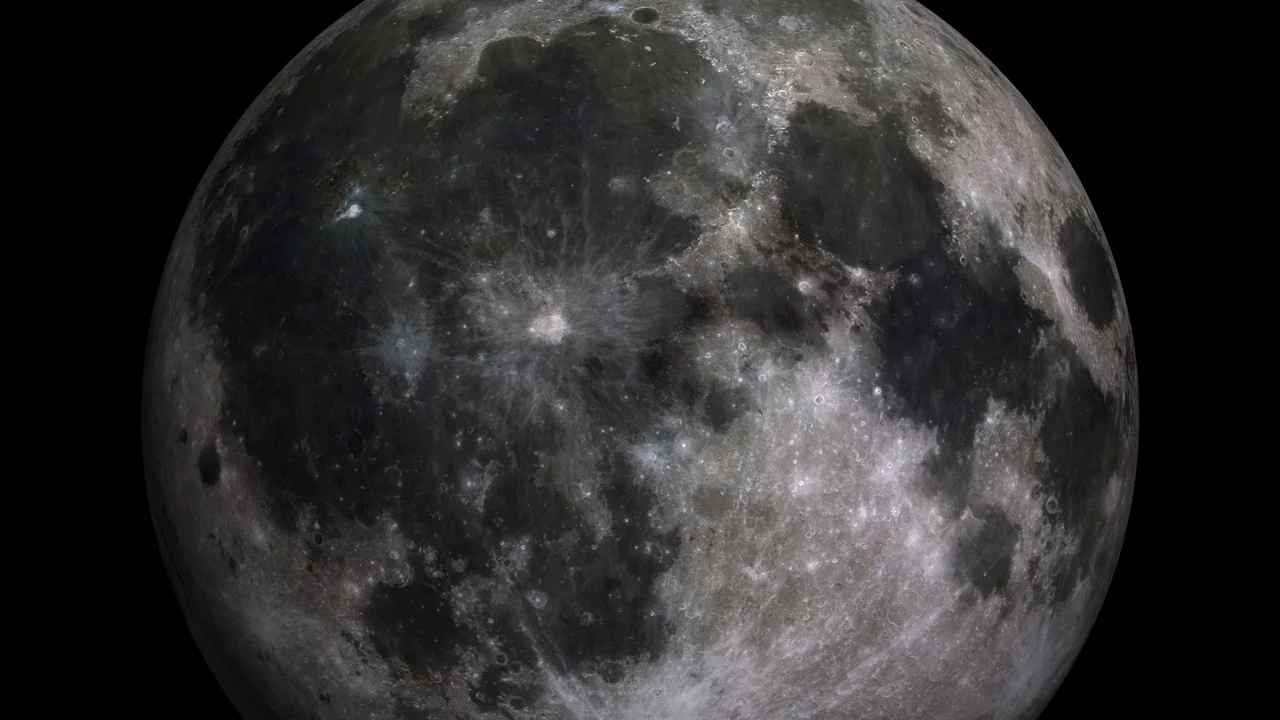
New research reveals the Moon is 85 million years younger than we thought
Scientists trace the timeline of the Moon back to its birth
Roughly four and a half billion years ago, as the story goes, a massive protoplanet named Theia slammed into Earth, blasting out a cloud of debris that eventually formed into our Moon. Discovering exactly how long ago this event happened is no easy task, but a new study has shown that it occurred a little bit later than we previously thought.
When astronauts and robotic missions brought back samples of dust and rocks from the lunar surface, a close examination of these samples revealed something surprising. Regardless of how different the Moon looks compared to Earth, the minerals the two objects are made of are remarkably similar to one another. This realization allowed scientists to narrow down the list of potential origin stories for the Moon, until they now generally agree with what is called the 'giant impact hypothesis'.
When did this event happen, though? The best estimate so far has it occurring 4.51 billion years ago, but is this correct?
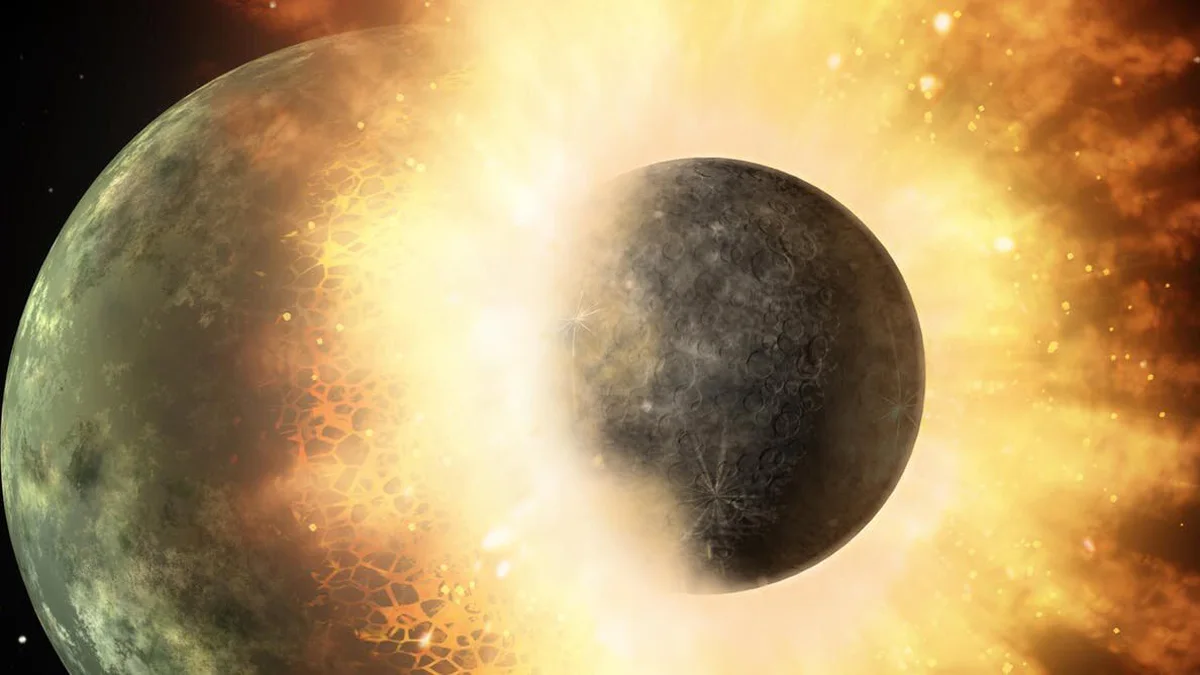
This artist impression shows the protoplanet Theia colliding with proto-Earth. Credit: NASA
Lead by planetary geophysicist Maxime Maurice, a team of scientists from the German Aerospace Center (DLR) and the University of Munster pooled their collective knowledge to design a new computer simulation that would attempt to answer this question. To trace back the timeline of the Moon's formation, though, they had to work through a few steps.
Step 1: How long does it take a cloud of impact debris to coalesce into a Moon-sized sphere?
Following the impact, the giant glob of molten mantle that got blasted off the Earth, and the cloud of smaller debris that surrounded the area, would have to gather together into one mass. Based on their model, the team found that this would happen relatively quickly.
"From this, the Moon was formed in a short time, probably in just a few thousand years," study co-author Doris Breuer, the Head of the Planetary Physics Department at the DLR, said in a press release.
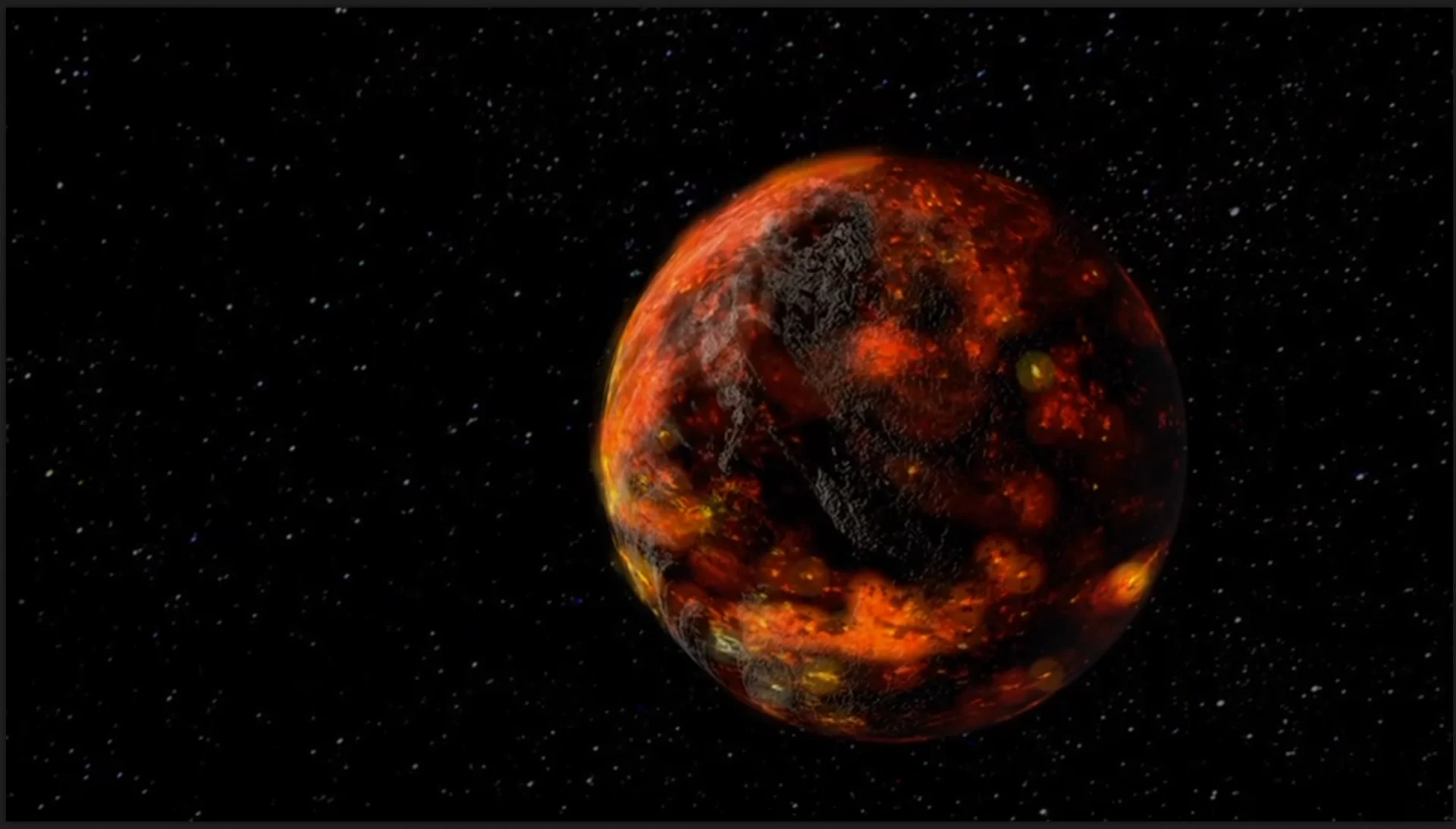
The molten Moon produces its first solid crust. Credit: NASA Goddard Space Flight Center
Step 2: How long would it take for the resulting new Moon to cool?
Once all that dust and rock compressed down into a Moon-sized sphere, it would result in a lot of heat - enough to produce a 1,000 kilometre deep magma ocean covering the entire surface of the new Moon. With no atmosphere to help retain heat, the surface of this magma ocean would have quickly cooled and solidified, forming a crust. The rest of the sub-surface molten magma would then take millions of years to finally cool down.
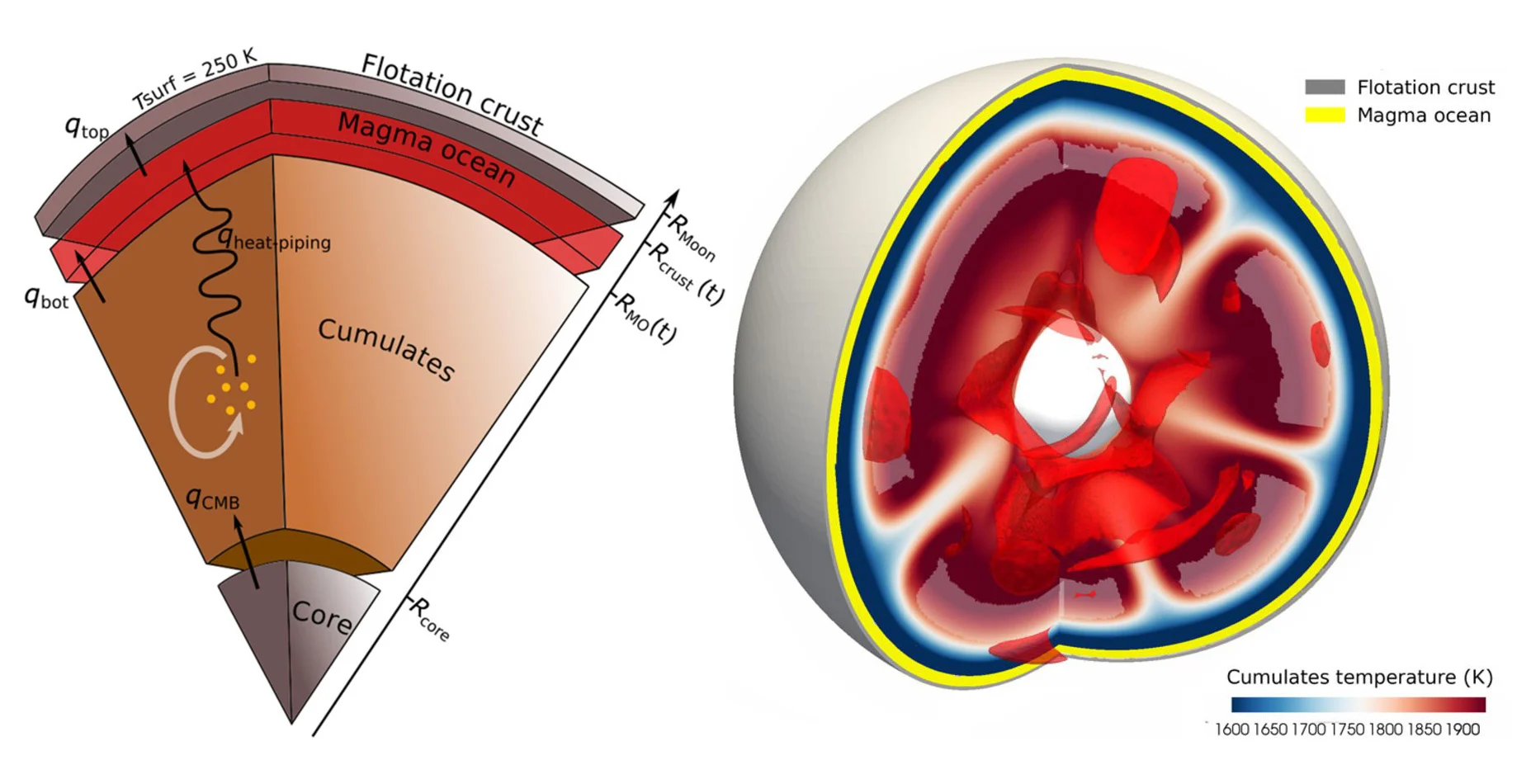
The interior structure of the early Moon, with its deep liquid magma ocean. Credit: DLR/Maurice, et al.
"The results from the model show that the Moon's magma ocean was long-lived and took almost 200 million years to completely solidify into mantle rock," Maurice said in a DLR press release. According to the researchers, this is far longer than previous studies had found.
Step 3: The timelines had to fit with what we know about Moon rocks.
The rocks brought back from the Moon by Apollo astronauts and Russian sample return missions were found to have very specific combinations of minerals.
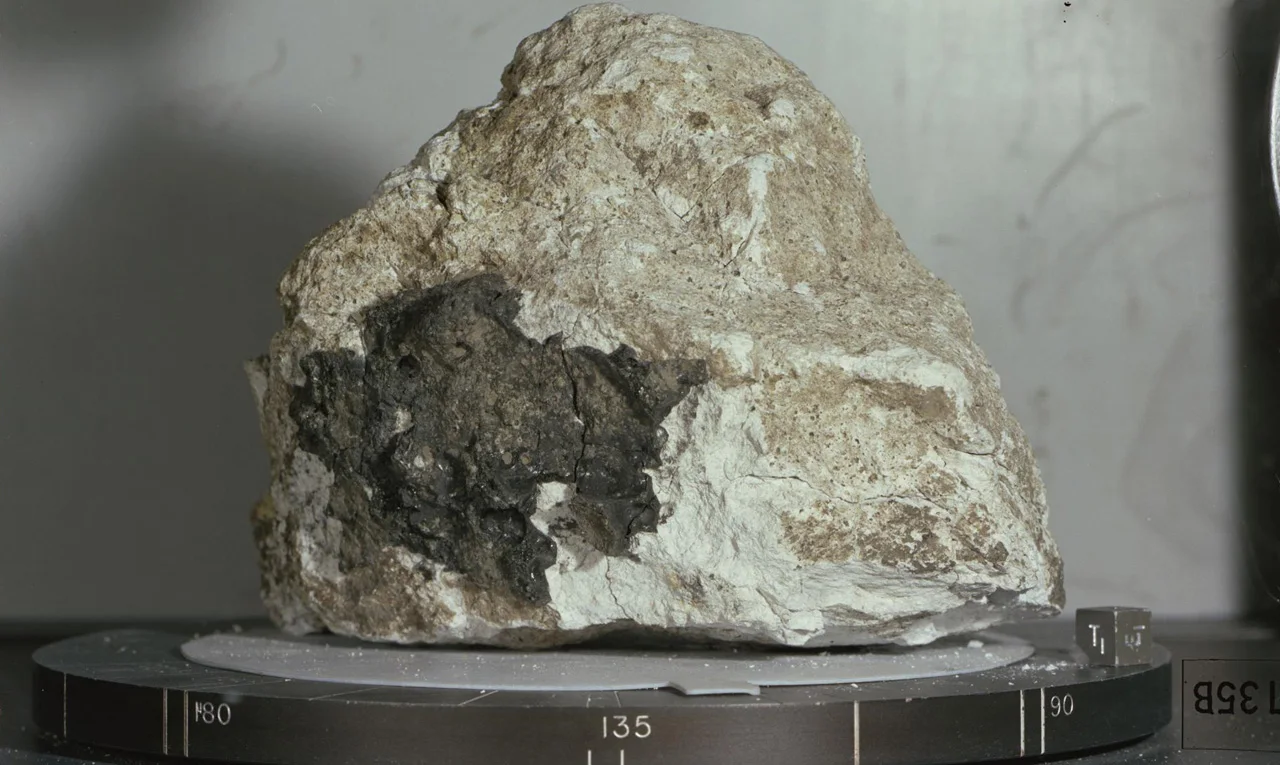
Lunar sample 60025, brought back by the Apollo 16 crew in 1972, is one of the oldest moon rocks ever found. Credit: NASA/JSC/AACO
So, if the timeline of this new model was to be believed, the detailed simulation of cooling molten Moon magma had to produce the same types of minerals found in the real rocks.
"By comparing the measured composition of the Moon's rocks with the predicted composition of the magma ocean from our model, we were able to trace the evolution of the ocean back to its starting point, the time at which the Moon was formed," co-author Sabrina Schwinger, a planetary physicist at DLR said in the press release.
"The results of our latest modelling suggest that the young Earth was hit by a protoplanet some 140 million years after the birth of the Solar System 4.567 billion years ago," Maurice summed up. "According to our calculations, this happened 4.425 billion years ago."
With the previous estimate of its age at 4.51 billion years old, that's makes the Moon 85 million years younger than we thought!
Source: DLR | Science Advances
